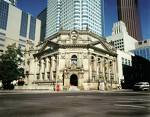
This is the recently released report of the Toronto Regional Real Estate Board concerning the August 2021 results:
“November 3, 2021 – Home sales in the Greater Toronto Area (GTA) reached the second-highest level on record for the month of October. However, the inventory of homes for sale did not keep up with demand. The number of new listings was down by approximately one-third compared to October 2020. Market conditions tightened across all major home types compared to last year, and the annual rate of average price growth remained in the double digits, including for the resurgent condominium apartment segment.
“The only sustainable way to address housing affordability in the GTA is to deal with the persistent mismatch between demand and supply. Demand isn’t going away. And that’s why all three levels of government need to focus on supply. The federal government has stated that collaboration with provinces and municipalities is required. This collaboration could be spearheaded, at least in part, with housing-related incentives tied to federal infrastructure investment,”
said TRREB President Kevin Crigger.
GTA REALTORS® reported 9,783 sales through TRREB’s MLS® System in October 2021 – down by 6.9 per cent compared to the October 2020 record of 10,503. A strong double-digit increase in condominium apartment sales mitigated annual declines in low-rise home sales. The number of new listings entered into the system was down by almost a third over the same period, with consistent declines across all major home types.
The MLS® Home Price Index Composite Benchmark was up by 24.2 per cent year-over-year. The average selling price for all homes combined rose by 19.3 per cent year-over-year to $1,155,345. The low-rise market continued to drive price growth in October, but the annual price growth for condominium apartments was in the double digits as well.
“The tight market conditions across all market segments and areas of the GTA is testament to the broadening scope of economic recovery in the region and household confidence that this recovery will continue. A key part of future economic development in the GTA will be the ability to provide adequate ownership and rental housing supply so that people can continue to move to the region to live, work and spend money in the local economy,”
said TRREB Chief Market Analyst Jason Mercer.”
TRREB always compares things to exactly one year ago. It sometimes provides rather odd comparisons. That’s why I don’t do that in this report.
REVIEW
Here are the average sale prices as reported by TRREB for single family homes of all types in the GTA, including houses, townhouses and apartments starting at the beginning of 2018 until now:
Average Prices Month
2018
$734,837 January 1st
$735,874 January 31st
$767,801 February
$784,514 March
$804,926 April
$803,440 May
$808,066 June
$781,918 July
$765,252 August
$796,814 September
$807,538 October
$787,741 November
$749,019 December
2019
$749,019 January 1st
$747,175 January 31st
$779,791 February
$788,133 March
$820,373 April
$838,248 May
$831,882 June
$806,971 July
$792,134 August
$842,421 September
$851,877 October
$843,307 November
$838,662 December
2020
$838,662 January 1st
$838,087 January 31st
$910,068 February
$902,788 March
$820,226 April
$863,563 May
$931,131 June
$943,594 July
$951,219 August
$960,613 September
$968,535 October
$955,889 November
$932,306 December
2021
$932,277 January 1st
$966,068 January 31st
$1,044,933 February
$1,097,351 March
$1,090,590 April
$1,108,077 May
$1,089,118 June
$1,062,71 July
$1,069,981 August
$1,136,119 September
$1,155,345 October
For those following these numbers on a monthly basis, please note that some of the recent sales numbers in 2020 and 2021 have had to be restated. A few transactions may have fallen through and not closed as originally scheduled. Consequently, TRREB deletes them and re-enters them in the proper month. That will throw the average prices off by a few hundred dollars if you are looking back at previous monthly reports for consistency. Changes are more likely for the most recent months.
You will notice that the market is now at $1,155,345 which is the all-time peak for prices.
What usually happens each year? The market starts off in January, rises in February, gains momentum in March and April and reaches its peak for the year in May. The market declines in June, declines in July and then bottoms out in August. In September, it reverses itself and rises once again, and in October, it reaches its second peak for the year. In November, the market declines, as it does again in December, and the cycle repeats itself the following year.
For 2021, we re off to a predictable start. The market got going in January, rose in February and rose again in March. April prices dropped which is unusual, however, nothing is more predictable than a May peak. The decline in June and July were predictable, but the sudden rise in August was somewhat unexpected. We would expect to see increases in September and October, both of which took place.
Let’s undertake an analysis with respect to the rates of return achieved over the last several years. The purpose of this calculation is to smooth out the returns over a longer time period to produce more accurate results. This avoids the rise and fall in a month or two and notably the reference to the exact same month a year ago, which may not be a particularly relevant calculation. You will notice that TRREB refers back 12 full months for comparison purposes. The results should always look reasonably good, because after all, that was a year ago. As you go forward, there should always be good news to report. On the other hand, you would clearly see the ups and downs of the market if you looked at the monthly results. Hence, this report provides you with all those numbers.
The market has declined substantially a few times. Within the last three decades, there are three examples: 1990, 2008 and 2017. The first two are largely historical now.
We will start with 2017 which was a year with a peak in the market and the sudden drop. 2017 started with $730,472 and we are now at $1,155,345, that’s an increase of $424,873 which is a 58.16% increase over the fifty seven (57) month period. Expressed over 12 months, that’s a 12.25% annual increase.
2018 started with $734,837 and we are now at $1,155,345, that’s an increase of $420,508, which is a 57.22% increase over the forty five (45) month period. Expressed over 12 months, that’s a 15.26% annual increase.
2019 started with $749,019 and we are now at $1,155,345, that’s an increase of $406,326, which is a 54.25% increase over the thirty three (33) month period. Expressed over 12 months, that’s a 19.73% annual increase.
2020 started with $838,662 and we are now at $1,155,345, that’s an increase of $316,683, which is a 37.76% increase over the twenty one (21) month period. Expressed over 12 months, that’s a 21.58% annual increase.
So, what’s the percentage rate of increase to the end of August?
From 2017 12.25% calculated
From 2018 15.26% calculated
From 2019 19.73% calculated
From 2020 21.58% calculated
The most accurate number here is the 12.25 % annual increase from the beginning of 2017. It’s the longest time period, and is therefore the most steady and accurate. Historically, over one thousand years of history we have seen increases of over 5% per annum. So, this is certainly not new! Typically, for the GTA we might expect 6.5% annually in terms of increases. This is a fairly consistent pattern. Right now, we are double that, or for the very short term, triple that number.
We do run into a substantial difficulty with many buyers from 2017. If you bought in April 2017 at the peak, you paid $919,614. That property is now worth $1,155,345, that’s an increase of $235,731 which is a 25.63% increase over the fifty three (53) month period. Expressed over 12 months, that’s a 5.80% annual increase. You can appreciate what a significant difference is made by using a different starting point for the purposes of the calculation. Just four months, and we either have 12.25% (January) or 5.80% (April).
It does speak to the decision for those who faced closing in 2017 after paying the high prices. They actually broke even in June 2020, while those who failed to complete have suffered substantial losses, with no property at all to show for it. They are now well ahead of just having their money sit in the bank. The message is clear: if you can close, do so, and hold on, because at some point the market will reward you. Those who closed have now achieved a positive rate of return. Those who failed to close have simply lost all of their money, without anything today to show for it.
Volume of Sales
Here are the sales over the last number of years. It’s important to be aware that potentially, there is a great deal of interest. It was only when the market skyrocketed and then plunged in 2017, that many prospective purchasers were frightened to participate. To a certain extent they have returned but there is very limited supply. That makes it a “super-sellers’ market”. As more and more inventory arrives, the market is likely to transition, but in all probability it will remain a “sellers’ market” until the end of 2021.
2015 101,214
2016 113,040
2017 92,340
2018 78,018
2019 87,750
2020 95,087
2021
January 6,888
February 10,931
March 15,628
April 13,617
May 11,905
June 11,061
July 9,340
August 8,563
September 9,029
October 9,783
Total 106,745
You will notice that there have been a great many transactions. The market is “hot” and relatively, there is little to no inventory. It’s a Seller’s market. We are currently at 106,745 transactions with two months to go. This is substantially in excess of last year (remember Covid at the outset). We are about 10,000 short of an all time record breaking 2016.
The reasons seem straightforward:
- Interest rates are low, and
- Buyers are optimistic about the market.
COMMENT
Some market trends that we have been seeing:
- Increase in the demand for cottages, but now leveling off (leasing and owning)
- Increase in demand for properties with backyards (semis and detached)
- Increase in demand for properties in the suburbs and outlying areas
- Toronto based families looking to relocate to the 905 and 519 areas
- 905 based families looking to relocate to 519, 705 and 613 areas
- Baby boomers staying in place rather than downsizing
- Renewed interest in downtown condos
It’s impossible to predict the future, but we can certainly observe the current trends in the marketplace to give us some guidance.
Predictions
Buyers are getting tired of being consistently outbid. So, they will pause to some extent. This will take the pressure off the bidding wars and price acceleration. This occurred to some extent earlier in the year, but we still saw price increases even with fewer bidders.
The market will still be a Sellers’ market for the balance of 2021, but the pace will slow down.
It looks like the impact of Covid is over, at least when it comes to residential real estate. There will still likely be an affect once the moratorium on commercial tenancy evictions is lifted, which will not take place until April 2022. Many commercial premises should become available at that time.
If you would like to discuss the market, please give me a call at 647-404-8150.

Brian Madigan LL.B., Broker
